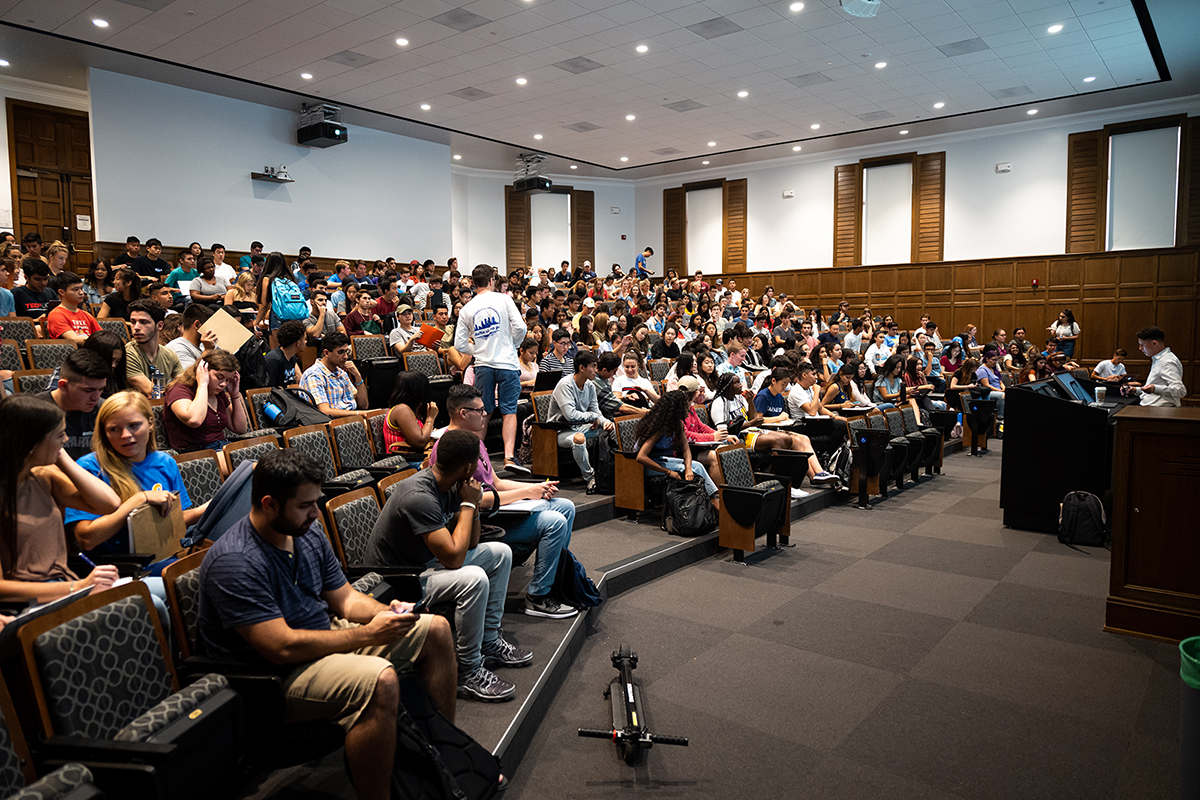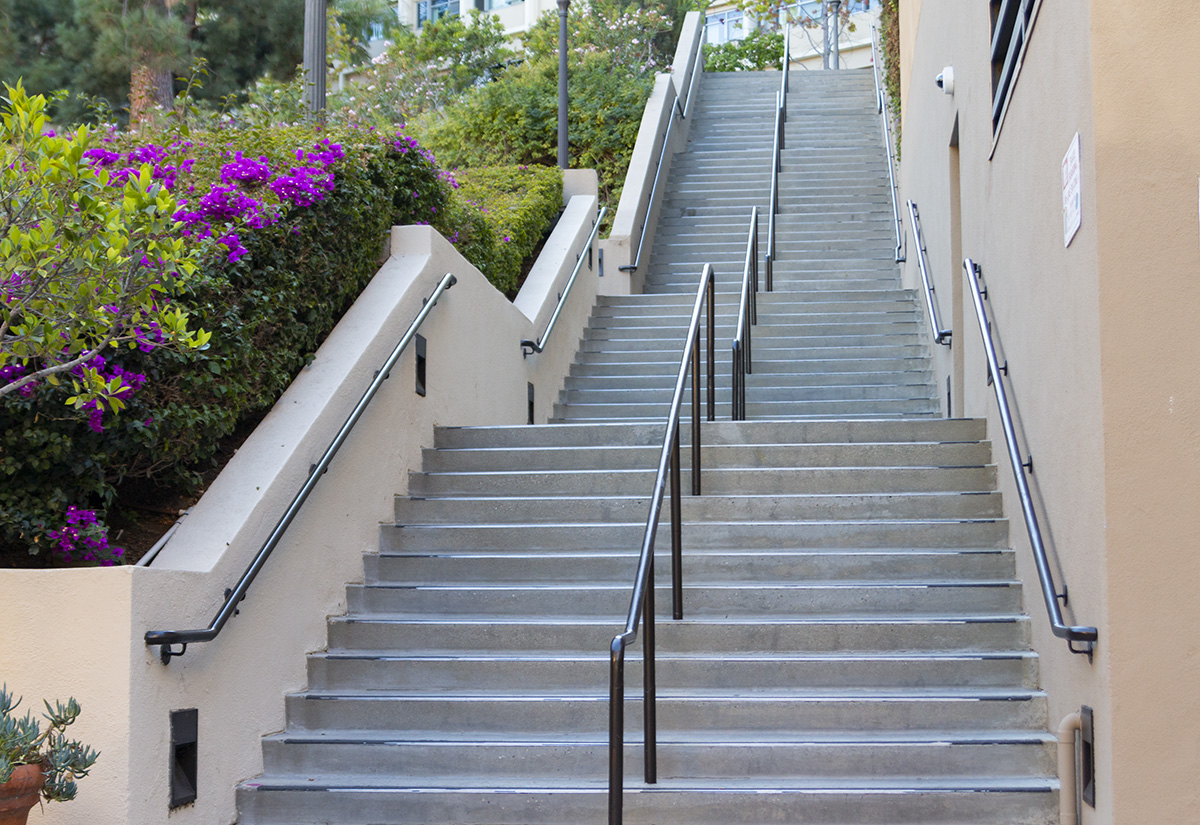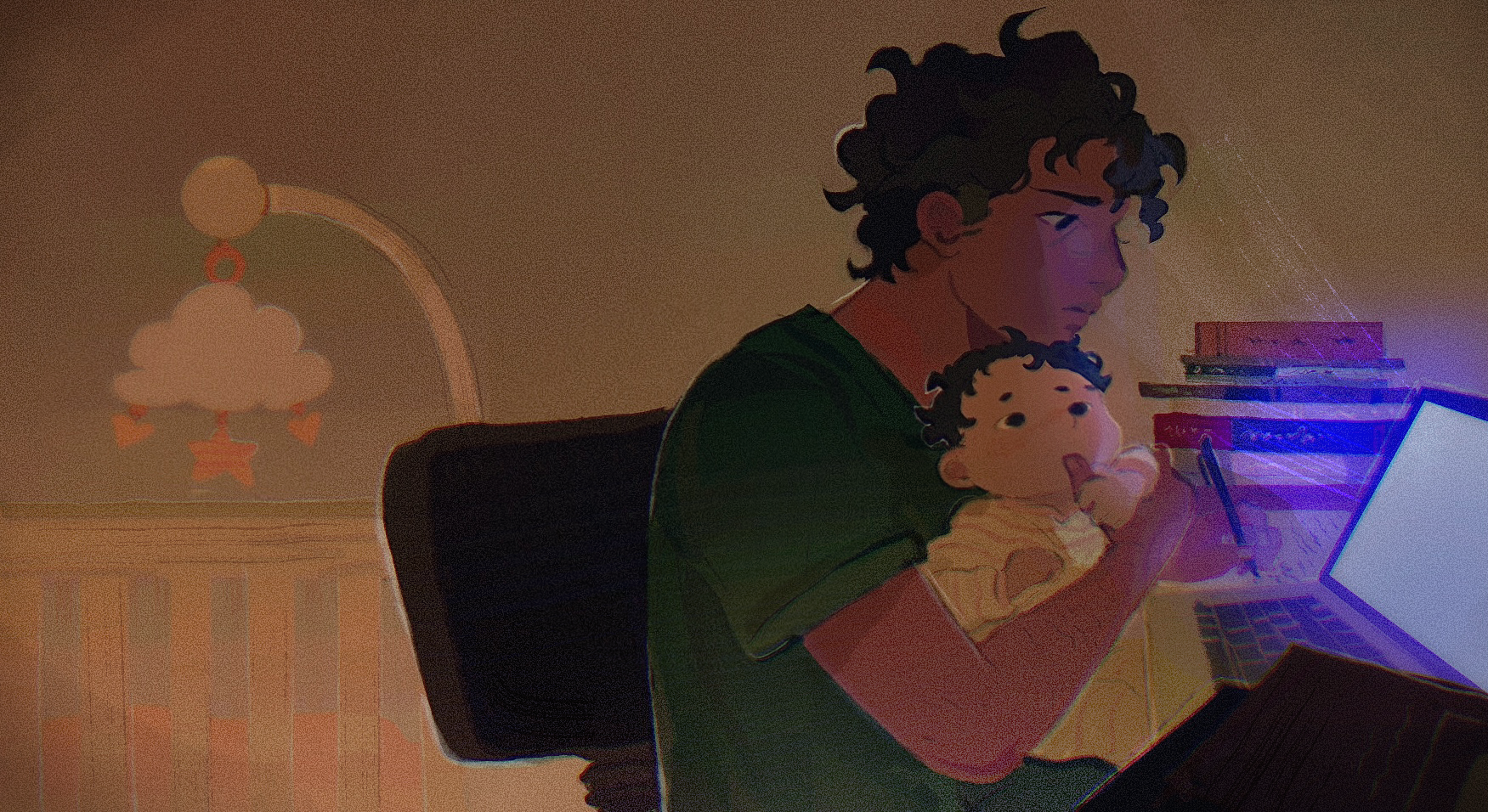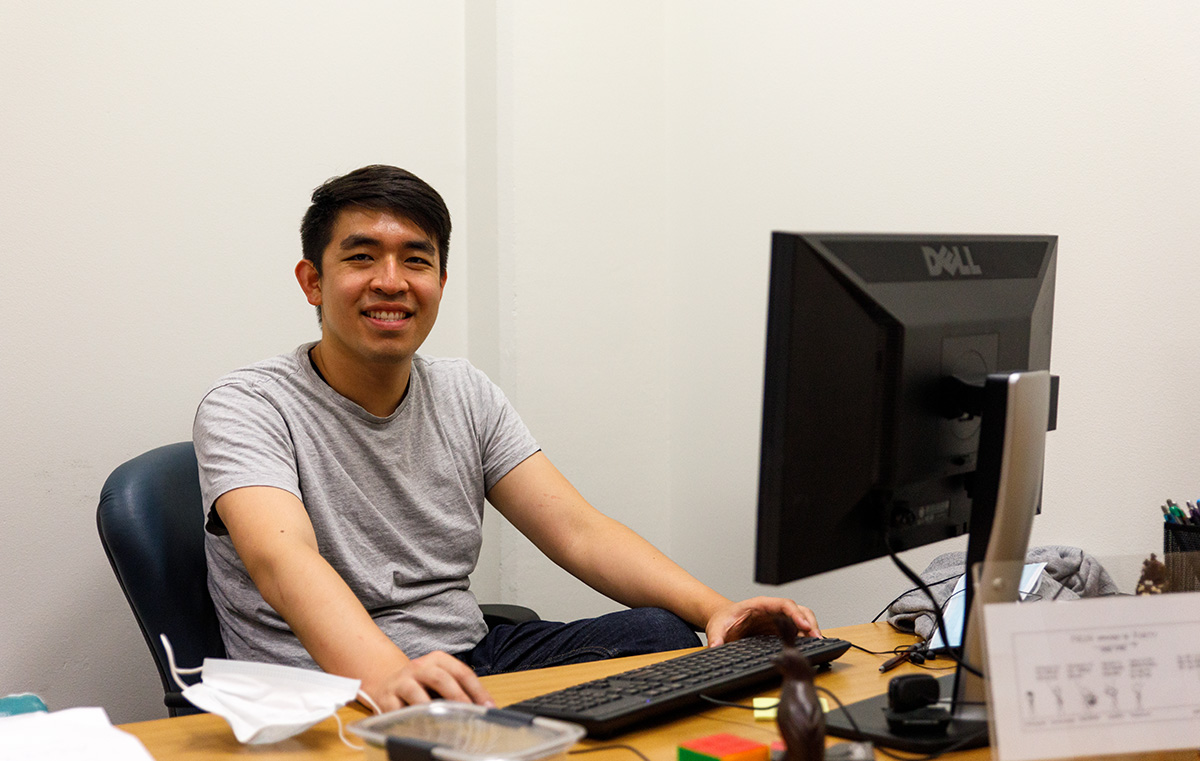A university post-pandemic: How UCLA can balance student engagement and accessibility

A lecture hall is pictured. While recorded lectures and remote options can improve accessibility, faculty must ensure course materials are relevant and up to date for students. (Daily Bruin file photo)
By Laura Gulbinas
Feb. 8, 2024 9:08 p.m.
This post was updated Feb. 8 at 11:28 p.m.
Four years ago, with the beginning of the COVID-19 pandemic, campuses across the country switched to remote learning. Today, the effects of this shift remain as professors reuse pre-recorded lectures and students neglect in-person learning in favor of the convenience of remote classes.
Since the transition to online learning in 2020, various surveys reported that remote options are less engaging and satisfying. Not only have students found their classes and education to be of lesser quality online, but engagement with peers and professors dropped significantly through a virtual model.
In the face of these consequences and negative student experiences, UCLA must push its faculty to encourage students to attend in-person classes. It must also regularly update their lectures and course materials in conjunction with new information in the field and current student interests.
Students, in turn, must resist the temptation of recorded lectures and return to in-person instruction to best benefit from their time at university.
UCLA has pushed for a return to a traditional in-person learning environment, claiming that most classes are offered in person with faculty encouraged to teach on campus. However, many students have experienced classes that either partially or fully rely on remote learning.
Chimerika Aneke, a third-year molecular, cell and developmental biology student, said that her lectures were relatively boring and repetitive. “It’s not very encouraging to sit down for hours watching all these lectures,” Aneke added.
It is imperative to acknowledge that this is not to conclude that professors should not record lectures at all; in fact, virtual learning can increase accessibility for students with disabilities, family or work responsibilities, and even those who need to go back and review material. However, these recordings should be used as a supplement rather than a substitute.
Many professors find it difficult to balance the benefits of in-person learning and concerns regarding accessibility.
Janelle DeWitt, an adjunct assistant professor in the Department of Philosophy, said there are advantages to in-person learning, but acknowledged the potential drawbacks of not providing optional recordings.
“There’s a lot of benefit to having the recordings, it’s just the temptation to then stop coming to class and put it off,” DeWitt said.
Since Bruins often face a heavy course load, work responsibilities and extracurricular activities, it may be easier to watch a recorded lecture or two in lieu of commuting to campus and attending lectures.
However, Sara Faraj, a third-year cognitive science student, said many students who do not attend in-person lectures are not as engaged as their peers who do attend, making class discussions difficult.
When preparing her courses, DeWitt insists on in-person lectures due to the greater potential for learning and engagement. With thought-provoking questions and relatable thought experiments or scenarios, DeWitt strives to deeply engage her students interactively to help foster their understanding of the material.
This level of engagement depends on in-person student attendance and cannot be replicated outside of the classroom.
In addition to switching from pre-recorded or remote learning, professors must also prioritize updating their materials. Although UCLA has commented on the need for in-person learning, the university does not appear to propose any standardized regulations on updated course materials.
“Many of our courses are focused on cutting edge topics and lectures are constantly updated to reflect the state of the field and current questions, while other classes teach about historical discoveries,” said Andrew Goldstein, the vice chair of the molecular, cell and developmental biology department, in an emailed statement. “For this reason, we do not have a single set of guidelines for all of our courses.”
However, without any guidelines, professors may fail to regularly update their course materials.
In regard to her classes’ outdated lecture slides or syllabi, Faraj said, “When we’re in a class that’s discussing more modern topics or science, there can be a lot of discoveries made day to day that should be included, and often times it feels like they’re not making the effort to look into that.”
These updates are not only necessary for a quality education, but they bolster student engagement as well.
“I also find that teachers, when they bring in current information, there’s more enthusiasm in the way that they teach these lectures, which I think is very encouraging for students,” Aneke said.
While updating lectures certainly applies to STEM classes that depend heavily on current research, courses of all disciplines could benefit from updates to ensure materials are appropriate and relevant to current students.
Although DeWitt’s course content dates back several centuries, she said she must be up to date with her lectures to foster student understanding and engagement.
“They’re sort of timeless ideas, but how you present them and connect them to the student lives, I need to adapt that part,” DeWitt said. “Each class has a different mix of people with different interests.”
By making the effort to adapt courses to current students, professors can ensure students receive the top-tier quality of education UCLA promises.
“A university is responsible for enforcing that all of the classes are provided at the highest quality,” Faraj said. “We can’t just call ourselves the No.1 public institution and then not be providing that level of academic rigor and academic support when it comes to student-professor interaction.”
UCLA must do its part in regulating updated lectures and encouraging in-person instruction for the betterment of student learning.





